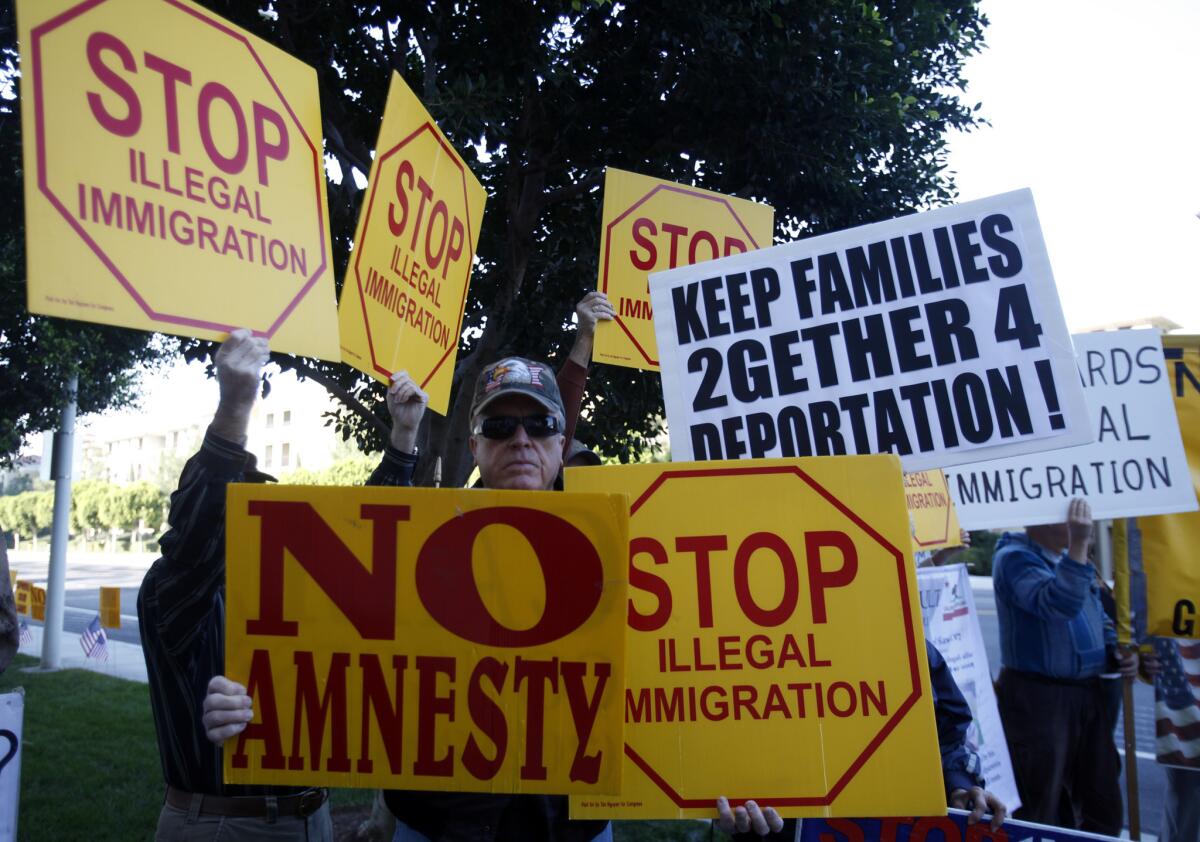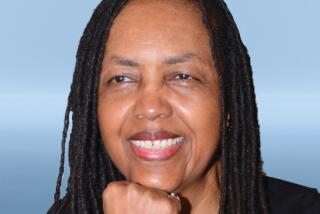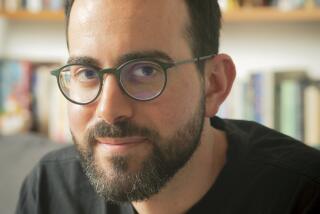John Tanton, quiet architect of America’s modern-day anti-immigrant movement, dies at 85

- Share via
For the last two years, Virginia-based immigration attorney Hassan Ahmad has fought the University of Michigan in court to unseal the personal papers of a small-town ophthalmologist named John Tanton so that all Americans can learn about his legacy.
Instead of making his mark in the medical field, Tanton became the unlikely architect of the modern-day anti-immigration movement in the United States through founding and funding propositions, nonprofits, activists and publications on a local and national level over the past 40 years.
For the record:
1:41 p.m. July 19, 2019An earlier version of this story said that NumbersUSA was created by John Tanton. It was founded and is led by Roy Beck.
The proposals championed by Tanton’s network — end birthright citizenship, drastically reduce legal immigration, build a wall on the U.S-Mexico border, criminalize illegal immigration, oppose sanctuary cities, severely limit asylum eligibility, limit the use of foreign languages, and cast the issues as a fight about culture — have dominated American political discourse over the last quarter-century. And they’re a key policy plank for President Trump as he gears up for the 2020 presidential campaign.
Tanton died Tuesday after a long battle with Parkinson’s disease. He was 85.
“For John, the big reward was to see a number of the organizations he helped conceive grow into tall oaks — guiding and shaping the public discourse in history-changing ways,” read a statement from Dan Stein, president of the Federation for American Immigration Reform (FAIR), one of the groups Tanton created.
Ahmad agreed.
“It sends chills down your spine,” Ahmad said. “I think if he knew how influential his ideas were, he died with a smile on his face.”
Tanton, whose father was a Canadian immigrant, was born in 1934 in Detroit. When he was 11, his family moved to an 80-acre farm in Sebewaing, in the so-called Thumb of Michigan off Saginaw Bay. The rural upbringing and modernity’s encroachment on wilderness made an impression on Tanton that initially transformed into environmental advocacy.
In the mid-1960s, he joined the Sierra Club and the National Audubon Society, and fought against development. But influenced by the works of Thomas Malthus and the 1968 book “The Population Bomb,” Tanton branched out his activism.
He helped Planned Parenthood open clinics in northern Michigan and went to Washington to speak before a federal commission on population growth. Eventually, he joined the national board for the nonprofit Zero Population Growth.
In research, Tanton came across statistics showing an increase in immigration after the passage of the 1965 Immigration and Nationality Act, which had lifted measures that favored immigrants from Europe over those from Asia and Latin America. He suggested to fellow conservationists and birth-control zealots that limiting immigration was an easy way to curtail population growth and save the environment, only to meet resistance.
“It was a forbidden topic,” Tanton said in an interview for an oral history decades later. “I tried to get some others to think about it and write about it, but I did not succeed. I finally concluded that if anything was going to happen, I would have to do it myself.”
In 1979, he founded FAIR, which has since worked with municipalities and states to craft laws that crack down on illegal immigration.
Tanton used its success as a template to create or encourage other organizations that would focus on specific angles to fight immigration. NumbersUSA, which was founded and is led by former journalist Roy Beeck, became the populist front, tasked with mobilizing phone calls and protests against any politician deemed sympathetic to immigrants in the country illegally. The Center for Immigration Studies was the policy wing that produced papers and editorials claiming illegal immigration hurt U.S. minorities and the economy.
Through other organizations, Tanton also donated money to suburban groups in the San Fernando Valley and Orange County that proved instrumental in the passage of Proposition 187, a controversial 1994 California ballot measure that sought various penalties against undocumented immigrants and people who helped them. But more than just wanting a clampdown on immigration, Tanton also took issue with the fact that Latinos were becoming a demographic force in the United States.
After reading a 1983 Esquire article in which Miami’s mayor at the time boasted that residents didn’t need to know English to survive in the city, Tanton founded U.S. English with S.I. Hayakawa, the former California senator. In 1986, the organization pushed Proposition 63 onto the ballot — a measure that sought to declare English as the official language of California. It passed with 73% of the vote. U.S. English went on to pass similar measures in 31 other states.
It was through this work that Tanton’s thoughts on culture and race became public. Through a publishing wing, Tanton reissued a translation of “The Camp of the Saints,” a notoriously xenophobic 1973 French novel that he called “the ‘1984’ of the twenty-first century” for its depiction of the West under siege by swarthy refugees.
In correspondence with U.S. English members originally exposed by the Arizona Republic in 1988, he wondered if Latin American immigrants would “bring with them the tradition of the mordida [bribe]” and if African Americans would suffer under a “Latin onslaught.”
And he fretted that American whites were endangered.
“As whites see their power and control over their lives declining, will they simply go quietly into the night?” he wrote. “Or will there be an explosion?”
In other correspondence, Tanton wrote, “I’ve come to the point of view that for European American society and culture to persist requires a European American majority, and a clear one at that.”
Such sentiments led former supporters including Walter Cronkite and Saul Bellow to sever ties with Tanton. For the rest of his life, Tanton eschewed any attempt to curry mainstream respect in favor of interacting with white nationalists and other far-right extremists, to the point that even former friends denounced him.
“The fear was that one ugly person could tar the larger [anti-immigration] movement, and sadly, ironically, it turned out that person was John Tanton,” former FAIR deputy director Patrick Burns told the New York Times in 2011.
The Southern Poverty Law Center, which considers FAIR to be a hate group, published multiple exposes on Tanton over the years. He didn’t care.
“It’s a motion for cloture,” Tanton said of allegations he was a racist, “to choke off debate.”
He is survived by his wife and two daughters. Tanton lived most of his adult life in Petoskey, a resort town on the shores of Lake Michigan that he boasted in one of his last interviews had “virtually no immigrant population.”
More to Read
Start your day right
Sign up for Essential California for the L.A. Times biggest news, features and recommendations in your inbox six days a week.
You may occasionally receive promotional content from the Los Angeles Times.







